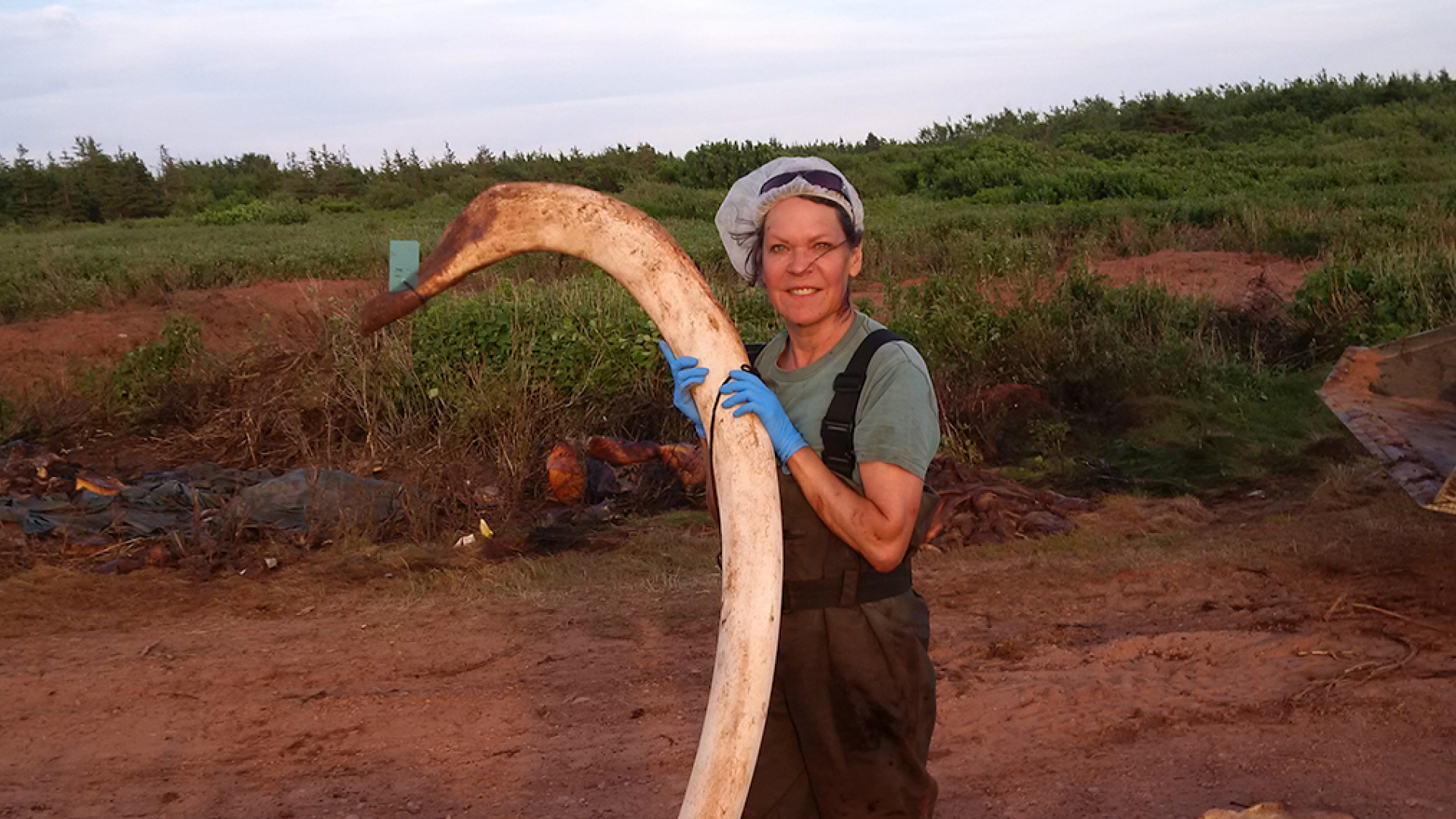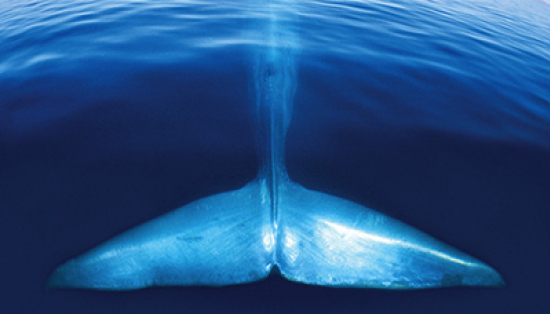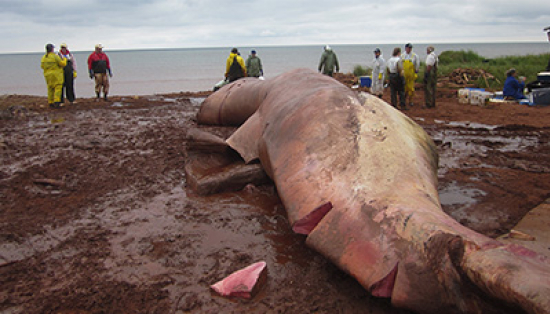Every Thursday at 10 am on Instagram we chat with a different ROM expert ready to answer your burning questions on a different subject. This time on Ask ROM Anything we are talking to Jacqueline Miller, a Mammalogy technician at the Royal Ontario Museum. Jacqueline prepares specimens coming into the department and manages the Mammalogy collection. She is responsible for maintaining the Mammalogy prep lab, tissue library and has occasional projects related to the ROM’s molecular laboratories.
Specimen prep begins in the field and Jacqueline has worked on mammal diversity surveys, as well as participated in salvaging large whale skeletons after mortality events. Before her career as a technician began 5 years ago, Jacqueline spent many years associated with the department as a zoology student. Her research interests span behavioural ecology (how environmental influences effect behavioural interactions of animals, in an evolutionary context), the study of morphological form and function, and phylogenetics (evolutionary relationships between species). She is particularly passionate about acoustic behaviour and has studied a variety of mammalian species.
Jacqueline is currently completing her PhD, looking at factors that influence the evolution of communication systems in mammals, using wild, North American mice as a model. Before her career at the ROM, Jacqueline also enjoyed 28 years as an emergency room nurse.
Q. What is the maximum depth a whale is known to swim in?
A. Different species of whales dive and feed at different depths in the oceans. Sperm whales hold some of the records for deep diving and there is evidence that they dive up to 2 kilometres to search for food. At this depth there is no light, and sperm whales use echolocation to find food in the inky blackness of the deep ocean. There is also a group of whales, the beaked whales, which dive to tremendous depths to feed. Beaked whale species can dive up to several thousand metres and can stay submerged for over an hour!
Q. What happens to the whales body when it dies?
A. The body of a dead whale usually sinks to the ocean floor where it is gradually decomposes and is consumed by a diverse community of scavengers. These scavengers represent many different marine species. We often see this process referred to as “whale fall”. The body of the dead whale supports this community and contributes to the marine nutrient cycle. Sometimes a whale will not sink and occasionally ends up near or on shore. Left to nature, decomposition would still occur gradually and even on land there are several species that will scavenge a dead whale as food.
Q. Has your ER experience helped you in any fieldwork situation?
A. Absolutely! Working in the field often takes you to remote parts of Canada and the world. Whether it is collecting the remains of a whale or surveying animal diversity in the Neotropics, getting medical help fast is sometimes a challenge. My training as a nurse and my understanding of anatomy and physiology also helps me interpret things like animal remains. Like my background in science, my ER background also helps me think critically, sometimes observing things I might otherwise not notice.
Q. What is the smallest whale and how big is it?
A. The smallest-bodied whales are the ones we often refer to as “dolphins” and “porpoises”. The fransiscana dolphin (also known as the La Plata dolphin) is very small, approximately 1.25 m (125 cm) long. The smallest cetacean is the vaquita, a tiny porpoise less than 150 cm long! The vaquita is also perilously close to extinction with less than a couple of dozen remaining.
Q. Whales are incredibly fascinating creatures. Do they make more sounds than the howl?
A. Whales are indeed fascinating and make a variety of sounds depending on the species. There are clicks, squeaks, trills, moans, whistles, and even drumming sounds. Male right whales can also make an odd 'gunshot' sound when communicating. Sounds whales make can be simple, or they can form complex patterns we understand as ‘songs’. The frequency, or ‘pitch’, of the sounds whales can make also varies. For instance, some of the clicks and creaks used by toothed whales for echolocation are too high a frequency for us to hear with a hydrophone. Many large baleen whales, like the mighty blue whale, produce sounds of such low frequency they also cannot be heard without special equipment.
Q. To what capacity can whales communicate? Are they capable of complex interaction?
A. Whales certainly do communicate and in the aquatic environment sound is extremely important for communication. Light diminishes as you go deeper in the water and below a certain depth no light penetrates at all, so sound is important. Sound also travels faster in water than in the air, so information can be shared quickly and effectively among whales. There are many studies of numerous whale species that investigate how and what information they communicate to each other. While some communication is simple in sound structure, acoustic signals made and used by whales can also be complex. The richness of this variability often depends on which species you are talking about, but sometimes a single species can have a vast repertoire of communication sounds, for instance the beluga and humpback whales. We also know that some whale species have dialects that are geographically distinct. However, some of the most compelling evidence that whales are capable of complex interaction lies in the social relationships and social societies that characterize many species. Examples of well-studied whales with societal structure are the sperm and killer whales. To have social structure you need to be able to communicate complex information about group members, ranks, individual motivation, and condition. This is often done using sound. Cooperative hunting and foraging can also require communication by sound, and we see this in many dolphin species.
Q. What’s the deepest a whale can survive underwater and how?
A. Sperm whales and beaked whales are record divers, even descending more than 2 kilometres in some accounts. There is a great suite of adaptations whales have evolved to deal with the tremendous pressure of these depths. One such adaptation is the ability to allow the chest and lungs to collapse when diving, without harming the whale. Other adaptations include slowing of the heart rate, and higher concentrations of myoglobin (like hemoglobin but found in muscle) which can store oxygen. Good places to find more info:
- Berta A, Sumich JL, Kovacs KM. Marine mammals: evolutionary biology. Elsevier; 2005 Dec 14.
- The Encyclopedia of Marine Mammals. Third Edition. Würsig B, Thewissen JGM, and Kovacs KM (eds). Academic Press, 2018.
Q. How are whale skeletons recovered? Are many washed to shore or are dives required?
A. Most whale skeletons museums and other academic institutions acquired today are recovered after necropsies performed by veterinarians and scientists after a whale is found dead. A necropsy is the same as an autopsy sometimes performed when people die, in order to help determine the cause of death. Many fatalities occur at sea and the dead whales must be towed to shore. Sometimes whales are found dead already on shore, after beaching or being brought in with the tide. The ROM has never employed a dive team to recover a whale carcass.
Q. My 9-year-old fell in love with Blue Whales at the ROM. She asks how far their voices travel
A. Water is a better conductor of sound than air, so sounds made by whales can travel much faster and further in the oceans than they would if the whale lived on land. Just how far whale songs and calls can travel also depends on their frequency, or ‘pitch’. The lower the frequency of sound, the further a sound can travel. The blue whale’s calls and songs are exceptionally low frequency. The songs of blue whales have been recorded many hundreds of kilometres through the oceans.
Q. Why and how did whales evolve to be so large despite being filter feeders?
A. There are lots of factors involved in the evolution of large body size. While it is true that the baleen whales are all pretty big, there were many smaller species also, millions of years ago, that have since become extinct. Some of the advantages of increasing size actually mean you can become more metabolically efficient with the food you take in. When you are large, you retain more heat, so you don’t have to spend as much energy producing heat than you would if small. This is especially true when you are as streamlined as a whale. A bigger, heavier mammal with less surface area relative to mass, actually needs fewer calories per unit of mass than a smaller mammal.
Q. What are some of your favorite cool facts about different whale species?
A. My favorite facts include:
- The lunge feed of a blue whale is the most mechanically immense single action made by any animal.
- Sperm whales and beaked whales can dive as deep as (and sometimes over) 2 km.
- Sperm whales only have teeth on their lower jaws.
- Beluga whales have such a rich vocal repertoire they were historically known as ‘sea canaries’.
- Some bottlenose dolphins are known to use sponges as a kind of tool when they forage for food.
- Humpback whales produce streams of bubbles to form ‘bubble nets’ and help encircle fishes to feed on.
- Blue whales sing.
- Humpback whales sing.
- Belugas sing.
- Many whale species sing!
Q. Can we still hope to see a whale exhibition in the fall?
A. Yes, we are indeed planning a spectacular new whale exhibition! It will be delayed somewhat by the recent closure of the museum during the COVID-19 emergency and is now scheduled for 2021. We are very excited about this new exhibition and assure you it will be worth the wait. ?
Q. What steps can we take to make sure whales continue to recover and thrive?
A. While some whale species have begun to recover since the moratorium on commercial whaling, there are many species that are still endangered, some critically so. Most of the risk to whales now comes from other interactions with human activity. These include boat strikes, entanglement in fishery lines and nets, the effects of pollutants and even the effects of marine noise from commercial shipping and resource industries. In some places around the world illegal whale catch still occurs. Less well understood are the predicted effects warming oceans will have on the food whales eat and where it can be found.
The first and foremost thing you can do as an individual is become informed. The next is to communicate, help get the message out. The third is to get involved. There are lots of things we can do as citizens and as consumers that can cumulatively have a positive impact.
There are many good organizations where one can obtain conservation information about whales and about how to make an impact. The Government of Canada also publishes reports on endangered species in Canada, as well as action plans for recovery. These include reports about the blue whale, the North Atlantic right whale, and the southern resident killer whale, among other species.




